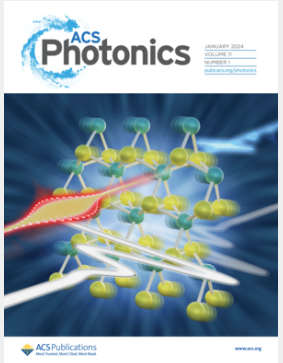Sub-2 Kelvin Characterization of Nitrogen-Vacancy Centers in Silicon Carbide Nanopillars
IF 6.5
1区 物理与天体物理
Q1 MATERIALS SCIENCE, MULTIDISCIPLINARY
引用次数: 0
Abstract
The development of efficient quantum communication technologies depends on the innovation in multiple layers of its implementation, a challenge we address from the fundamental properties of the physical system at the nanoscale to the instrumentation level at the macroscale. We select a promising near-infrared quantum emitter, the nitrogen-vacancy (NV) center in 4H-SiC, and integrate it, at an ensemble level, with nanopillar structures that enhance photon collection efficiency into an objective lens. Moreover, changes in collection efficiency in pillars compared to bulk can serve as indicators of color center orientation in the lattice. To characterize NV center properties at the unprecedented sub-2 K temperatures, we incorporate compatible superconducting nanowire single photon detectors inside the chamber of an optical cryostat and create the ICECAP, the Integrated Cryogenic system for Emission, Collection And Photon detection. ICECAP measurements show no significant line-width broadening of NV ensemble emission and up to 14-fold enhancement in collected emission. With additional filtering, we measure emitter lifetimes of NV centers in a basal (hk) and axial (kk) orientation, unveiling their cryogenic values of 2.2 and 2.8 ns.

高效量子通信技术的发展取决于其实施过程中多层次的创新,我们要应对的挑战包括从纳米尺度物理系统的基本特性到宏观尺度的仪器水平。我们选择了一种很有前景的近红外量子发射器--4H-SiC 中的氮空位(NV)中心,并将其与纳米柱状结构在整体水平上集成到物镜中,从而提高了光子收集效率。此外,与块状结构相比,柱状结构中收集效率的变化可以作为晶格中色心取向的指标。为了在前所未有的低于 2 K 的温度下描述 NV 中心的特性,我们在光学低温恒温器的腔体内安装了兼容的超导纳米线单光子探测器,并创建了 ICECAP(用于发射、收集和光子探测的集成低温系统)。ICECAP 测量结果表明,NV 集合发射没有明显的线宽展宽,收集到的发射增强了 14 倍。通过额外的滤波,我们测量了基向(hk)和轴向(kk)NV 中心的发射器寿命,揭示了其 2.2 和 2.8 ns 的低温值。
本文章由计算机程序翻译,如有差异,请以英文原文为准。
求助全文
约1分钟内获得全文
求助全文
来源期刊

ACS Photonics
NANOSCIENCE & NANOTECHNOLOGY-MATERIALS SCIENCE, MULTIDISCIPLINARY
CiteScore
11.90
自引率
5.70%
发文量
438
审稿时长
2.3 months
期刊介绍:
Published as soon as accepted and summarized in monthly issues, ACS Photonics will publish Research Articles, Letters, Perspectives, and Reviews, to encompass the full scope of published research in this field.
 求助内容:
求助内容: 应助结果提醒方式:
应助结果提醒方式:


